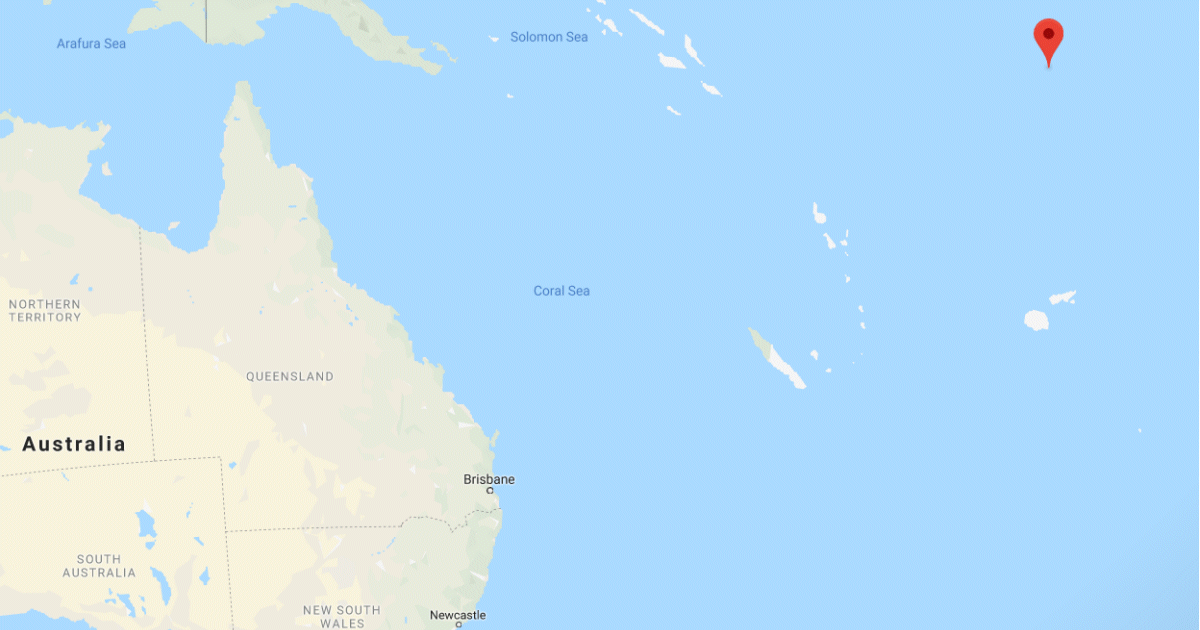
Image: Google Maps
The Asian Development Bank (ADB) is giving the tiny island nation of Tuvalu a big chunk of change to install more solar energy and battery systems.
Tuvalu is located in the Pacific Ocean about halfway between Hawaii and Australia. Its habitable areas consist of four reef islands and five coral atolls with a total land area of just 26 square kilometers that support a population of around 11,000. Most Tuvaluans(?) live on the main island of Funafuti, which is also the country’s capital.
The average height of the islands is less than 2 metres above sea level, with the highest point being just 4.6 metres. But while sea level rise connected to increasing levels of carbon dioxide in the atmosphere pose major threats to some island nations, it appears Tuvalu is safe – for now.
A claim last year by Liberal backbencher Craig Kelly that Tuvalu was “actually growing not sinking” was found by ABC’s FactCheck to be a fair call.
“In the four decades to 2014, Tuvalu’s total land area grew by 73 hectares, or 2.9 per cent,” states the ABC.
It goes to show that not everything Mr. Kelly says should be totally disregarded, as tempting as it may be to do so.
But Tuvalu’s growth doesn’t mean the sea level isn’t rising – it is – and whether the inhabited islands will stop growing and start losing land as a result isn’t clear. It also doesn’t mean Tuvalu shouldn’t be concerned about its own emissions; as little as they may be in the scheme of things.
Towards 100% Renewables
Tuvalu has another very good reason for wanting to get away from fossil fuel-based power generation – the cost.
Like many island nations, Tuvalu has a heavy reliance on imported diesel for electricity generation, which is expensive1 – and the country isn’t exactly an economic powerhouse. The gross national income per capita is USD $5,840 per annum, which is around AUD $8,500.
Anything that can bring down the cost of power generation is a very welcome thing if that generation is emissions-free.
The grant ADB is providing will fund the installation of rooftop solar panel and battery storage systems in Funafuti and ground-mounted solar power systems in the outer islands of Nukufetau, Nukulaelae, and Nui.
In Funafuti, the Increasing Access to Renewable Energy Project will see the contribution of renewables in its energy mix jump from 15% to 32% and from approximately 70% to over 90% in the outer islands. Overall, 35% of the electricity supplied in Tuvalu during daylight hours will be from clean renewable energy sources once the project is complete.
Tuvalu did have a goal of 100 percent renewable energy by 2020 and while it won’t make that target, the ADB’s contribution is going to give the country a big boost both from a practical and morale aspect as it continues striving towards having all its electricity sourced from renewables.
The ADB has splashed a significant amount of cash around the region for renewable energy – early last month we reported it awarded Nauru a USD $22 million grant for a 6MW grid-connected solar power plant and a 5MW/2.5MWh battery storage system. That project alone will take Nauru from 3% renewables to 47%.
Footnotes
- Although Tuvalu’s diesel may still be subsidised by Japan, I’m not clear on that ↩

 RSS - Posts
RSS - Posts



Speak Your Mind